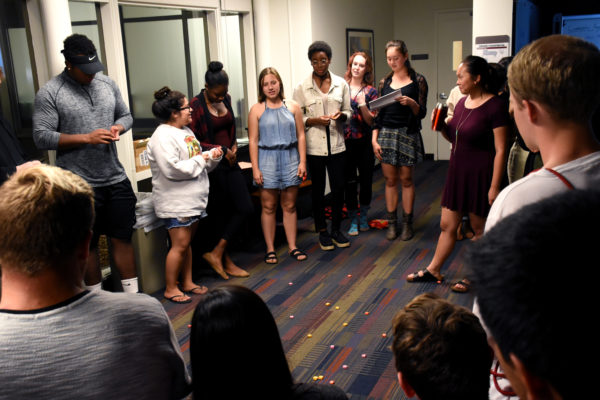
The Stanford Anti-Violence Educators (SAVE) program is the newest in a series of initiatives to educate Stanford students on sexuality, consent and sexual assault. Required for new students and intended as an interactive follow-up to the preceding week’s “Beyond Sex Ed” program, SAVE aims to shape a culture of consent and respect.
SAVE was launched last spring by the Office of Sexual Assault and Relationship Abuse Education & Response (SARA) along with the Sexual Assault Prevention Committee of the ASSU. Workshops are being held in freshman dorms during evenings beginning the week of Oct. 10.
Compared to other sexual education programs required for the Class of 2020, the SAVE workshops have a more personal setting and encourage active participation. Sessions are held in dorm common rooms and are capped at 50 students.
According to Scott Stevens ’20, this contrasted with the formal environment at programs such as “The Real World: Stanford” and “Beyond Sex Ed.”
“You sit down, and you’re looking at a stage,” Stevens said. “[SAVE is] much more casual because it’s dorm-based.”
Stevens also felt more connected and engaged in this setting than he did with the Haven online sexual education course, which freshmen completed over the summer.
As a new program, SAVE is a product of Stanford’s revised approach to addressing sexual assault on campus. According to Lark Trumbly ’17, one of the peer educators who leads SAVE workshops, Stanford has historically provided very little sexual education to students.
“[Five years ago], we didn’t have the online module — we didn’t have any programming like this,” Trumbly said. “We didn’t have ‘Beyond Sex Ed.’ We had ‘The Real World: Stanford,’ which is like an hour… So I’m very glad that Stanford is at least making an effort now because that did not happen my freshman year at all.”
Jasmine Mueller-Hsia ’18, also a SAVE peer educator, added that SARA has seen significant growth in recent years.
“One year ago, it was just Carley [Flanery],” Mueller-Hsia said. “She was trying to deal with every single incident of sexual assault that was reported, but it was just her. Then she brought in two new people, Brianna [Booth] and Grace [Poon].”
According to Mueller-Hsia, both staff additions have been instrumental to the changes in Stanford’s sexual education curriculum. Booth and Poon co-lead the SAVE program, and Booth created “Beyond Sex Ed.”
For Trumbly in particular, the issues she works with as a peer educator are personal. She became involved in running the workshops after going through her own Title IX process, through which she became aware of problems and inconsistencies in Stanford’s definitions of sexual assault. In her Title IX case, a man who had committed identical crimes against her and another woman was found guilty of “sexual assault” against Trumbly but “sexual misconduct” against the other woman.
“I don’t really know how [the administration] make[s] that distinction, and I don’t think that’s gotten any clearer,” Trumbly said.
It was as a result of such situations, said Trumbly, that SAVE workshops chose to examine what Stanford considers sexual harassment, relationship violence and stalking, as well as brainstorming more inclusive definitions.
Another SAVE activity involved presenting statistics that demonstrated the disproportionate impacts of sexual assault on different groups of people. Mueller-Hsia was inspired by a course with medicine professor Marcia Stefanick regarding sexual assault’s effects on various populations, such as people with different abilities, the elderly, young children, people of color, transgender and queer people.
The workshop also discussed the importance of communication and self-awareness in healthy relationships.
Though she acknowledged that there remains room for improvement, Mueller-Hsia expressed optimism about SARA’s future initiatives and praised its staff for their positive vision of sexual education. She credited SARA for emphasizing student involvement, as much of the SAVE curriculum was developed and modified with student input.
“We were able to pull on different experiences to create this,” Mueller-Hsia said. “We’ve never had anything like this before here.”
For the student attendees, programs like SAVE are a sign of change. “I’m really hopeful,” Stevens said, “and I’m glad that Stanford’s doing this.”
Correction: A previous version of this article stated that Poon spearheaded the SAVE program, but both Booth and Poon now co-lead SAVE. The Daily regrets this error.
Contact Xinlan Emily Hu and Emily Jusuf at xehu ‘at’ stanford.edu and ejusuf ‘at’ stanford.edu.
